10 of Scotland's most unusual buildings
This article contains affiliate links. We may earn a small commission on items purchased through this article, but that does not affect our editorial judgement.
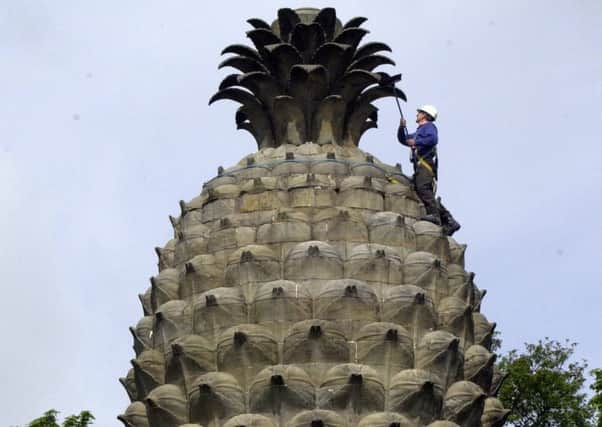

Maggie’s Centre, Dundee
Designed by Frank Gehry, the architect behind the Guggenheim Museum in Bilabo, the Maggie’s Centre Dundee was the charity’s first new-build project and set the standard for the radical designs which were to follow in its name.
The white, cottage-like building with a wavy silver roof is modelled on a traditional Scottish “but n’ ben” dwelling, and offers a welcoming sense of calm and sanctuary.
Advertisement
Hide AdAdvertisement
Hide Ad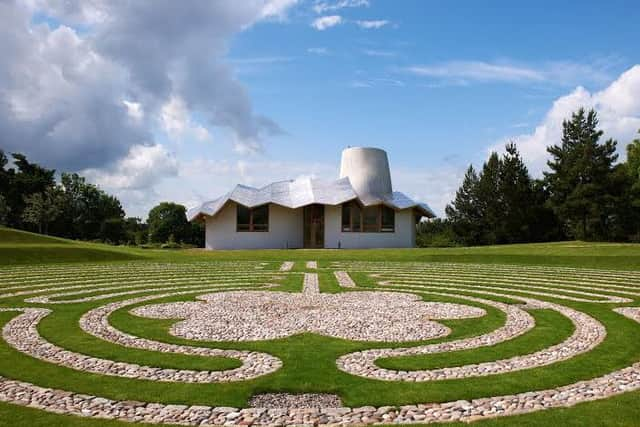

Maggies was co-founded by Maggie Keswick Jencks and her husband Charles Jencks, both celebrated landscape architects and designers.
At the Dundee centre, the garden is a labyrinth design based on the one at Chartres Cathedral in France. It also contains a sculpture by acclaimed artist Anthony Gormley, Another Time X.
Maggie’s Aberdeen Centre was built in 2013. Designed by Snøhetta, it sits like a white, smooth pebble in the grounds of Aberdeen Royal infirmary with a sense of safety and peace created by the structure.
Dollan Aqua Centre, East Kilbride
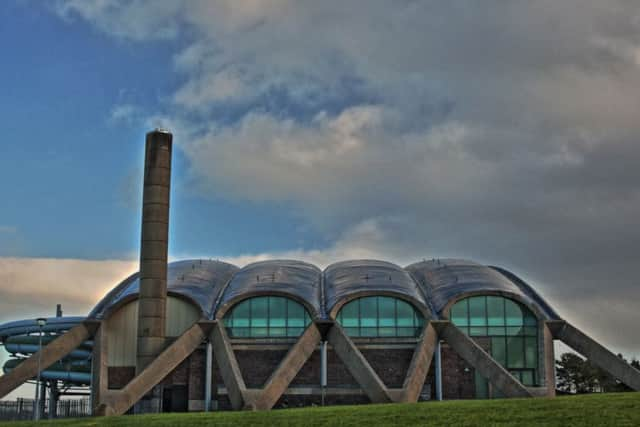

The Dollan Aqua Centre is considered an outstanding and rare example of a mid 20th century public building and hailed for its striking internationally- inspired design.
It was the first champion-sized swimming pool in Scotland and was inspired by Pier Luigi Nervi’s Olympic complex in Rome and similar to the complex built for the 1964 Japanese Olympic Games.
Designed by Alexander Buchanan Campbell (1914-2007), the baths were renovated in the 1990 and again between 2009 and 2011.
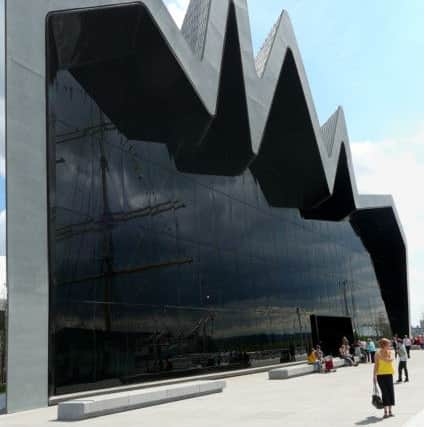

Lotte Glob House, Sutherland
Danish ceramic artist Lotte Glob created her dream house in 2001 with a wish to bring the wilderness of north-west Scotland into her living and working space.
Advertisement
Hide AdAdvertisement
Hide AdShe wanted an affordable place to call home with designer Gokay Deveci creating a haven which takes in both the sunrise and the sunset through east and west facing windows. A timber deck that projects into the sky towards Ben Hope and Loch Eriboll.
Glob, who has since planted 4,000 trees on the former croft land, says living in her house is like “floating through the air”.
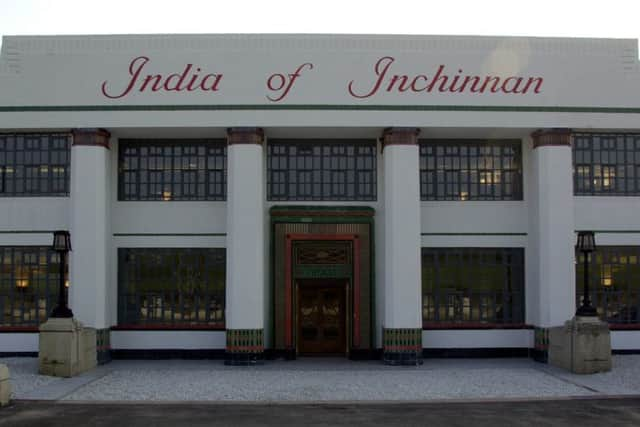

Dunmore Pineapple, Airth, Stirlingshire
It is beauty for beauty’s sake - and why on earth not? The Dunmore Pineapple is perhaps Scotland’s most popular quirky building and was built in 1761 for John Murray, the 4th Earl of Dunmore, as part of a hothouse where he could grow his favourite fruit.
With pineapples a strong byword for wealth and power during the 18th Century, Murray succeeded in making a proud statement of his status in a fun and beautiful way.
Most people believe Sir William Chalmers, a founder member of the Royal Academy, was responsible for its creation. The 14-feet high cupola features Gothic sash windows with Ogee moulded arches on seven sides.
He also ensured that each pineapple leaf is separately drained to prevent the stone succumbing to frost damage.


Kylesku Bridge, Sutherland
The bridge spans Loch a’ Chairn in Sutherland in Sutherland and is considered a fine example of bridge building . It weaves over the water, seamlessly fitting into the stunning landscape with the concrete structure winding into the wild surrounds.
Advertisement
Hide AdAdvertisement
Hide AdThe bridge replaces the ferry, which in itself cut out a 100-mile detour via Lairg.
Once, cattle would swim the water here with rowing boats transferring locals over the loch.
The bridge was designed by Ove-Arup and opened by the Queen in 1984.
St Peter’s Seminary, Cardross
This disused Roman Catholic seminary near Cardross, Argyll and Bute, Scotland is described as modern “building of world significance” and is one of 42 post-war buildings in Scotland of Grade A listed status.
Its radical design was devised by Glasgow architects Isi Metzstein and Andy MacMillan after the seminary was commissioned in 1958 by the Archbishop of Glasgow.
Metzstein and MacMillan took an old mansion house and wrapped around it a striking new main block to create a quadrangle where the old and new was finely balanced.
The college was vacated in 1978 due to a drop in numbers of those training for the priesthood.
Advertisement
Hide AdAdvertisement
Hide AdAccording to the Buildings at Risk register, the abandoned pile has been systematically vandalised and is now reduced to a ruinous skeleton.
In March 2016, Glasgow-based art collective NVA was awarded £4.2 million from Heritage Lottery Fund and Creative Scotland to take forward it plan to reclaim the seminary and turn it into a art and performance venue of international repute.
Snodgrass House, Silverburn, near Penicuik, Midlothian.
James Morris and Robert Steedman are behind some of the most radical post-war houses in Scotland with the Edinburgh-based architects inspired by new forms following a spell of study in the United States.
Snodgrass House on the south side of the Pentland Hills is just one example of their approach which redefined the notion of home for a select group of forward thinking Scots who craved a different, modern living model during the 1950s and 1960s.
Built on the south side of the Pentland Hills near the Biggar Road, Snodgrass House, built for Dr and Mrs Snodgrass in 1964, is broadly featureless apart from one stone dyke running along the front of the house
A circular, introspective, form was considered the best solution for the open landscape given that it could protect the family’s young children from the road.
The only escape from the garden is through the front door with the living and dining areas at the centre of the property.
Advertisement
Hide AdAdvertisement
Hide AdA guide to the world of Morris and Steedman by Historic Scotland describes how the fully glazed curving colonnade overlooking the garden acts as a sundial and casts shifting shadows around the building.
Samye Ying Buddhist Centre, Eskdalemuir
Samye Ying is a spiritual attraction that draws worshippers from across the world to the Scottish borders.
Named in honour of the first-ever monastery to be established in Tibet, Samye Ying was founded by Tibetans Dr Akong Tulku Rinpoche and Chogyam Trungpa Rinpoche and opened in 1967,
David Bowie and Leonard Cohen were students amongst students at Samye Ling in the late 1960s with Bowie almost becoming a monk. In an interview, he said was within a month of having his head shaved.
No one person is credited with the creation of Samye Ling, built on the site of an old The building of Samye Ling, with the temple complex evolving over several decades due to the work of a devoted religious community.
Riverside Transport Museum, Glasgow
Designed by the late Zaha Hadid, the museum signalled a bold new future for the Clyde as a place of learning and recreation, with the city’s past brought firmly and respectfully into the present with the museum building.
Hadid described the building as a wave, flowing from the city to the waterfront and which symbolised the dynamic relationship between Glasgow, shipbuilding, sea faring and industry.
Advertisement
Hide AdAdvertisement
Hide AdIt opened in 2011 with Hadid’s building truly revered in the city and beyond.
India of Inchinnan, Inchinnan, Renfrewshire
The only Category A-listed Art Deco building in Scotland still in commercial use, the building housed the factory and offices of the India Tyre and Rubber Company for over 50 years.
Architect Thomas Wallis was hired to do the work to help the firm show its rising prosperity during the 1930s with his portfolio also including the famous Hoover Building in Perivale.
India of Inchinnan showcases many of the typical Art Deco traits associated with the fashion of the times. Its white stucco walls have been meticulously restored with red, black and green tiles spelling out the company’s proud logo.
The original building has been extended to feature an airship-inspired roof that covers the offices of the businesses in residence, resulting in the award of ‘Best Re-Use of a Historic Building’ being bestowed upon it by the Scottish Design Awards.
DOWNLOAD THE SCOTSMAN APP ON ITUNES OR GOOGLE PLAY
